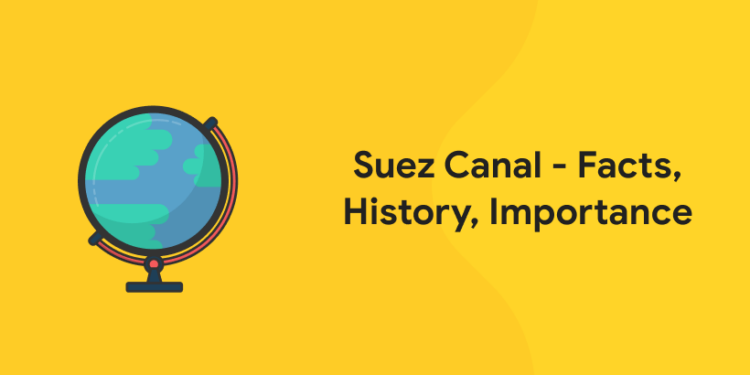Table of Contents
Suez Canal is also known as Arabic Qanāt al-Subways. The Suez Canal is a sea-level channel steering north-south across the Isthmus of Suez in Egypt. The Suez Canal links the famous Red Sea and the Mediterranean. The Suez Canal is famous for dividing the African continent from Asia. The Suez Canal is also known for furnishing the shortest maritime route. The Marianne Route is facilitated between Europe and the lands fibbing roughly the Indian and western Pacific oceans.
Suez Canal is known as the world’s considerable laboriously operated shipping artery. The channel stretches in all about 193 km. The channel is lying between Port Said and Suez. The canal accomplishes the quickest trail across the isthmus. It moves only in 121 km. It operates among several lakes. From north to west it lies through Lake Manzala, Little Bitter Lake and Lake Timsah, and the Bitter Lakes—Great Bitter Lake. The Suez Canal is an unobstructed stake. The canal stretches without any locks. There are many comprehensive forthright altitudes along with eight prominent arches. A low-lying delta of the Nile River is visible and to the east, the Sinai Peninsula is visible on the opposite. The Suez canal is constructed in 1869. Suez was the most important settlement with 3,000 to 4,000 inhabitants.
Due to the tremendous growth in the shipment of petroleum and crude oil from the Gulf, the traffic has altered beyond human comprehension. As per the survey, in 1913 the petroleum in northbound gridlock was counted to 295,700 metric tons. It amounted to 168,700,000 metric tons in 1966. The use of large oil tankers on the route around the Cape of Good Hope was facilitated with the closing of the trench from 1967 to 1975. During the same period, the development of the Sumed pipeline from Suez to Alexandria occurred. The Suez canal can be regarded as the greatest origin of crude oil.
Suez Canal History
The foremost channels that united diverse trenches in this zone were constructed in antique Egypt. The Suez Canal was built in the year 4,000 years ago by Egyptians. The canal fused the Red Sea to the Mediterranean Sea is an important thing to be noted down.
The first effort made to build the canal with innovations was started by Napoleon Bonaparte. He had the agenda to construct a massive trade situation for his English foes. As the engineers miscalculated many essential things, the canal construction was completely abandoned.
Thirdly, in the middle of the 19th century, the French intellectual hoops made the next effort to reconstruct the Suez canal. The French diplomat, after much studies, permitted the Ottoman viceroy of Egypt, to produce the contemporary canal. The Suez Canal Company thus built the trough in 1859. The Suez Canal Company was initially acknowledged by the French and Egyptian masses. In 1875, the British government conquered the Egyptian stakes. The canal was constructed within 10 years. The financial problems, the epidemic posed challenges to the construction of the canal. In August 1869, the construction came to an end. The canal was officially opened by the authorities on November 17, 1869.
Get more study materials on GK here!
Suez Canal Importance
1: Who was the first woman President of India?
The Suez Canal is managed totally by the Egyptians, and it has only been ultimately closed doubled in its chronology. in 1956, during a British, French, and Israeli aggression of Egypt, the canal was closed and opened again in 1957. During the Arab-Israeli war of June 1967, the canal was closed for a second time and remained closed until June 1975.
Free UPSKILLING Courses!
Take your first step toward mastering in-demand skills, acing interviews, and securing top-tier jobs with Entri's free upskilling courses.
Start Learning!Suez Canal Facts
The Isthmus of Suez is a contemporary geologic root. Both mainland turned into a single enormous continental pack. During the times of Paleogene and Neogene, the splendid spot structures of the Red Sea and Gulf of Aqaba developed, with the opening and subsequent drowning of the Red Sea trough as far as the Gulf of Suez and the Gulf of Aqaba. In the Quaternary Period, a low-lying isthmus emerged. There the Nile delta unfolded. The region received abundant rainfall. The Isthmus of Suez is not consistent topographically. Lake Manzala, Lake Timsah, and the Bitter Lakes are the three superficial water-filled recesses. One can notice bands of limestone and gypsum. The isthmus is formed of marine sediments, coarser sands, and gravel deposits.












